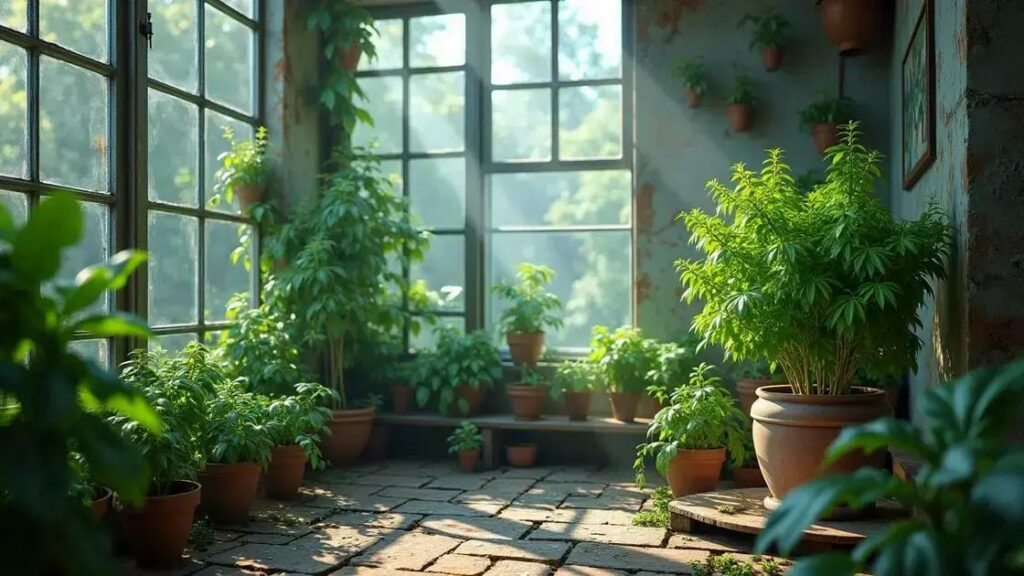How to care for a basil plant indoors? This delightful herb not only adds flavor to your dishes but also brings a refreshing aroma to your home. Imagine cultivating your very own basil plant, enjoying its vibrant green leaves as you watch it flourish steadily. But to ensure that your indoor basil thrives, there are fundamental aspects to consider. Let’s navigate through some essential tips that will help you take care of this herb successfully.
Table of Contents
ToggleUnderstanding the ideal watering schedule for basil
Understanding the ideal watering schedule for basil is crucial for maintaining its health and vibrancy. Basil, a popular herb often used in various cuisines, thrives when provided with just the right amount of moisture. Overwatering can lead to root rot, while underwatering may inhibit growth. To achieve optimal watering, consider the following tips:
How often to water your basil
Frequency of watering can vary based on environmental factors, but here are some guidelines:
- In general, water your basil plant every 5-7 days.
- Check the soil moisture before watering; if the top inch is dry, it’s time to water.
- Adjust watering frequency based on temperature and humidity levels.
Signs of overwatering and underwatering
Recognizing the symptoms of incorrect watering is key:
- Overwatering: Yellowing leaves, wilting, and a soggy soil texture can indicate that the roots are sitting in water.
- Underwatering: Crisp, dry leaves or browning tendrils may suggest your basil is parched.
Best practices for watering basil
To maintain your indoor basil plant, follow these best practices:
- Always use well-draining pots and soil.
- Water in the early morning to minimize evaporation.
- Consider using self-watering containers for consistent moisture.
By adhering to these guidelines for understanding the ideal watering schedule for basil, you can ensure a robust and flourishing herb that enhances your indoor gardening experience. For more on maintaining plant health, exploring indoor gardening techniques could provide further insights.
Choosing the right soil requirements for indoor basil

Choosing the right soil requirements for indoor basil is essential for healthy growth and abundant harvests. The soil you select can significantly influence the overall health and vitality of your basil plants. Poor soil can hinder growth and lead to problems such as poor drainage and nutrient deficiencies. Here’s what you need to know to get it right:
The best soil types for basil
When selecting soil for your indoor basil plants, consider these options:
- Potting mix: A high-quality potting mix is ideal as it provides good drainage and aeration.
- Organic soil: Opt for organic soil that is rich in nutrients, promoting robust growth without harmful chemicals.
- Loamy soil: A blend of clay, silt, and sand, loamy soil retains moisture while allowing excess water to drain effectively.
Nutrient requirements for basil soil
For optimal growth, make sure the soil contains the following nutrients:
- Nitrogen: Supports leaf growth, which is essential for basil.
- Phosphorus: Aids in root development and flowering.
- Potassium: Enhances overall plant health and resistance to diseases.
Soil pH levels for successful basil cultivation
The pH level of soil is pivotal in determining nutrient availability. Basil prefers slightly acidic to neutral soil, with a pH range of 6.0 to 7.0. Test your soil pH and adjust it as necessary using:
- Pine needles or sulfur to lower pH levels.
- Lime to raise pH levels.
By understanding how to choose the right soil requirements for indoor basil, you pave the way for a thriving herb garden. For more guidance on nurturing indoor plants, exploring indoor gardening techniques might be beneficial.
Optimal sunlight exposure and fertilizer application for basil
Optimal sunlight exposure and fertilizer application for basil are crucial for ensuring healthy and vigorous growth. Basil thrives in bright, indirect sunlight and requires the right nutrients to flourish. Understanding how to balance these elements will significantly enhance your indoor gardening experience.
Sunlight requirements for basil
To optimize sunlight exposure for your basil plants, consider the following:
- Basil needs at least 6-8 hours of bright light each day, ideally from a south-facing window.
- If natural light is insufficient, consider using grow lights, which can be placed 6-12 inches above the plants.
- Monitor your basil’s health; if it starts to stretch toward the light or its leaves turn yellow, it may need more light.
Choosing the right fertilizer for basil
Fertilizer application is essential for providing the necessary nutrients. Here’s what to keep in mind:
- Use a balanced, water-soluble fertilizer, such as a 10-10-10 NPK mix.
- Apply fertilizer every 4-6 weeks during the growing season; this will help sustain robust foliage.
- Consider organic options like fish emulsion or compost tea for a more natural nutrient boost.
Tips for successful fertilizer application
To maximize the benefits of fertilizer, follow these tips:
- Always dilute liquid fertilizers to the recommended strength.
- Water your basil thoroughly before fertilizing to prevent root burn.
- Avoid fertilizing dormant basil plants in winter; wait until spring for the best results.
By understanding optimal sunlight exposure and fertilizer application for basil, you can create an ideal environment for your indoor herb garden. For more tips and techniques for thriving houseplants, exploring indoor gardening techniques may offer additional insights.
In conclusion
Caring for a basil plant indoors requires attention to detail in several key areas, including watering schedules, soil requirements, sunlight exposure, and fertilizer application. By understanding and implementing the optimal practices for each of these aspects, you can cultivate a healthy and vibrant basil plant that thrives in your home environment. Remember, the journey of indoor gardening is filled with learning experiences and the satisfaction of nurturing your plants. For more helpful tips and insights, check out this resource for tips on enhancing your indoor garden.

